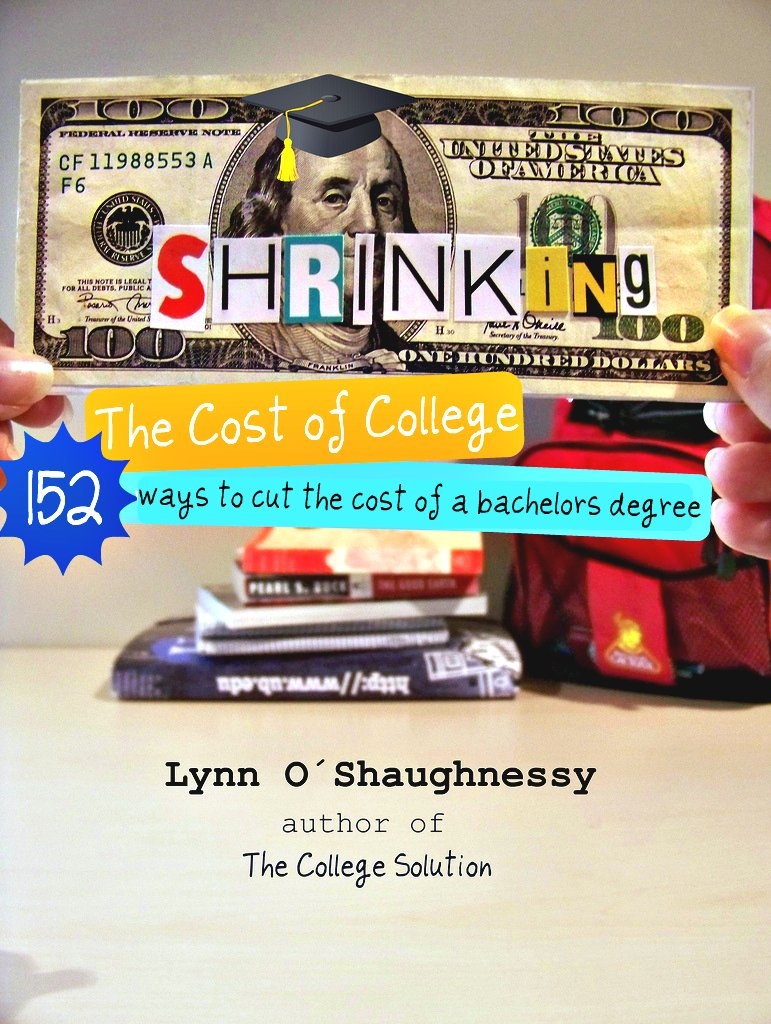
Infographic by- GO-Gulf.com Web Design Company
Social Media Scholar to Discuss Using Twitter to Improve College Student Engagement and Grades

![]() photo credit: Rosaura Ochoa
photo credit: Rosaura Ochoa
Dr. Rey Junco, a social media scholar and associate professor at Lock Haven University, will discuss how to use Twitter to improve college student engagement and grades during #CollegeChat on Twitter on March 1, 2011 at 9 p.m. Eastern.
During #CollegeChat, Junco (http://twitter.com/reyjunco) will discuss findings from a recent study he co-authored “The effect of Twitter on college student engagement and grades” with attendees including:
- Does Twitter encourage cooperation among students
- Does Twitter improve contact between students and faculty
- Whether Twitter promotes active learning and why is this important
- Can Twitter help build a strong learning community
- How does using Twitter show a respect for diversity
Junco investigates the impact of emerging technologies on college students. His investigations concentrate on how social media affect student psychosocial development, engagement, and success. His research has focused on informing best practices in technology use with students in the areas of advising, student affairs, and teaching. Through research findings, Rey has shown that technology, especially social media like Facebook and Twitter, can be repurposed in order to improve educational outcomes. He is especially interested in examining the digital divide– differences in the ownership and use of technology by members of underrepresented groups.
About #CollegeChat
#CollegeChat is a live bi-monthly conversation intended for teens, college students, parents, and higher education experts on Twitter. #CollegeChat takes place on the first and third Tuesday of the month at 6 p.m. Pacific/ 9 p.m. Eastern. Questions for each #CollegeChat edition can be sent to Theresa Smith, the moderator of #CollegeChat via http://Twitter.com/collegechat , by entering questions online on the CollegeChat Facebook page at http://ht.ly/1XIqV , or by email. More detailed information about signing up for Twitter and participating in #Collegechat can be found at http://pathwaypr.com/how-to-participate-in-a-twitter-chat .CollegeChat can also be found on Twitter at http://Twitter.com/collegechat .
NPR Twitter User Survey says…
2010 College Graduates: How to Land your First Job via CollegeChat
 While the job market for the 2.4 million college graduates of the class of 2010 remains torturous, there are a number of strategies graduates can utilize to increase their chances of landing their first job according to Kathryn Marion, a columnist covering the college-to-career transition and author of “Grads: Take Charge of your First Year after College”. During the June 29, 2010 edition of #CollegeChat via Twitter, Marion (http://twitter.com/tips4grads ) and other college professionals discussed tips for graduates to help secure their first job.
While the job market for the 2.4 million college graduates of the class of 2010 remains torturous, there are a number of strategies graduates can utilize to increase their chances of landing their first job according to Kathryn Marion, a columnist covering the college-to-career transition and author of “Grads: Take Charge of your First Year after College”. During the June 29, 2010 edition of #CollegeChat via Twitter, Marion (http://twitter.com/tips4grads ) and other college professionals discussed tips for graduates to help secure their first job.
“The first thing any job seeker should do to begin their job hunt is to know thy self,” said Marion. “When thinking about where you want to go in your career, start at the end, the long term. Work backward and figure out what will get you there. Part of knowing thy self is to truly understand what your values and priorities are.”
Marion recommends the following tips for college graduates:
- Don’t limit your job search. Cast a wide net and use a number of resources including alumni networks, your alma mater’s career services center, on-campus networks, online job boards, and professors. Megan Wilson, (http://twitter.com/megs0124 ) an Admission counselor at Western Carolina University added, “Students should also make use of their college Career Services office. They can help with leads or even resume and interview tips.”
- Make sure your online reputation is fiercely protected. One of the first things potential employers will do when you apply for a job is to search for more information about you online. Search your name on Google and see what comes up. Clean up your Facebook posts and photos and register your name (as well as different variations and misspellings of it) as domains. Consider setting up a simple website for free where you can create a main hub of information about yourself. A good resource to use for protecting your online reputation online and for improving important career skills is http://betterthanaresume.com/ .
- Improve your writing and speaking skills. In order to improve your writing skills, graduates should start their own blog. Katie Corcoran ( http://twitter.com/JoblessGrad2010 ), a Boston area resident and a May 2010 graduate of the University of Colorado at Boulder, has recently opened her own blog at http://thejoblessgrad.wordpress.com
“I really started the blog to share the frustrations that all of us graduates face when beginning the grueling search for not only the “perfect” job but just a job in general,” said Corcoran. “I have toyed with the idea of simply attempting to get a waitressing job just to hold me over financially until a job in the real world comes along. This process is a complete and utter emotional roller coaster. The point of the blog is not for employers to sympathize with me or offer me a job, but its purpose is to relay elements of my story, and eventually others’ stories, to let grads know we are all in the same boat here.”
- Network effectively and play often. In order to network effectively, graduates need to join groups which align with your field of work or passions and give as much as possible. Graduates need to have professional profiles on LinkedIn, Facebook and Twitter. Graduates should also invest in some business cards with your personal contact information and links to your professional domain. Marion recommends graduates use http://www.meetup.com to find local groups of people who share your passions and career interests. Another good place for networking, according to Sharon McLaughlin, (http://twitter.com/shashmc ) founder of McLaughlin Education Consulting, “is your local Chamber of Commerce. You can attend events without joining the group.”
- Dress for success. Invest in your professional wardrobe. According to Marion, it is more important now than ever to invest in a professional wardrobe in order to be taken seriously in the job market. Marion recommends job seekers read the book, “Inspired Style!” http://dld.bz/jdC9 . Fuji Fulguras, (http://twitter.com/campusbound ) a college counselor with Campus Bound, added, “Why is it important to invest in a professional wardrobe? You do not get a second chance to make a good first impression.”
- Build a personal board of directors. Mentors can be temporary or longer-term; they can help with one task, such as reviewing your resume, or they can be a sounding board for your ideas and concerns. Don’t limit yourself to just one mentor, but create a valuable support group that will help you through all the phases of your job search and career development.
- Consider an internship. Internships are not just for undergraduate students anymore “Don’t wait for a listing to pop up somewhere. Check the employers directly that you are interested in working for,” said McLaughlin.
“The more internships a student does can help define things the student does not want to do as well as would like to do professionally,” said Fulguras.
Hopefully, the graduate already has an internship under his or her belt before graduation. According to Akil Bello, (http://twitter.com/akilbello) the vice president of Educational Development for Bell Curves, “College students should do internships every summer.”
- Write down your goals. According to Marion, studies have shown that those people who take the time to think about what they want to accomplish in their lives, write them down, and put that list in a visible place so it’s always foremost in their mind, are the ones who are exponentially more likely to reach their desired goals.
- Remember that first jobs don’t dictate your entire career path. After you get your first job, remember to continue to network, to interview people for information about what they do, job shadow, and discover a way to align your paid work with what excites you.
Kathryn Marion is the award-winning author of the career and life skills book, “GRADS: TAKE CHARGE of Your First Year After College!”, and a columnist on Examiner.com covering the college-to-career transition and life after college in general. She coaches college students and young professionals on career planning, job search, and life skill concerns, and helps people in all walks and stages of life get published. Kathryn is also the editor of the book series, “The Smartest Thing I ever Did…” The print edition of GRADS: TAKE CHARGE of Your First Year After College! Is available through major online retailers and discounters; the e-book edition is available through www.QwikSmarts.com.
About #CollegeChat
#CollegeChat is a live conversation intended for teens, college students, parents, and higher education experts on Twitter. Questions for each #CollegeChat edition should be sent to Theresa Smith, the moderator of #CollegeChat either via http://Twitter.com/collegechat or by entering questions online at the CollegeChat Facebook page at http://ht.ly/1XIqV. CollegeChat can also be found on Twitter at http://Twitter.com/collegechat.
1st #CollegeChat: Bestselling College Author Provides 10 Tips to Cut the Cost of College
Although the cost of paying for college is eclipsing many families’ budgets, by doing their own research families can dramatically reduce the cost of college according to Lynn O’Shaughnessy, higher education journalist and author of the new ebook Shrinking the Cost of College: 152 Ways to Cut the Price of a Bachelor’s Degree. During the first session of #CollegeChat on Twitter, Lynn shared 10 tips from her new book that can potentially save college students and their families thousands of dollars.
“What’s become apparent to me is that families devote a lot more time to stressing about college than actually evaluating their options,” said Lynn O’Shaughnessy. “I’ve run into plenty of parents who seem to know where their children will attend school before they ever visit a single campus. I have no idea how much time the typical family spends researching colleges, but I do believe that it’s not enough. I believe that these tips from my new book can help steer families into helping their children make great choices for college that will also spare their budgets.”
Lynn recommends the following ten tips to shrink the cost of college:
- Cast a wide net. According to Lynn, some of the best deals for college may be time zones away. 35% of students attend school 50 miles or less from home but in-state schools aren’t always the cheapest. Sometime private schools are better deals than public schools. Lynn recommends families and students look at Forbes magazine best college rankings for ideas for potential colleges http://bit.ly/9SrzuF and also recommends reviewing http://www.zinch.com/ and http://www.cappex.com for college ideas that can be outside the box.
- Check out colleges’ graduation rates. Fewer than 60% of college students graduate in six years which can dramatically impact a family’s bottom line. An excellent resource to start researching 4, 5, and 6 year graduation rates is http://collegeresults.org/ . Lynn also recommends reviewing the list of schools from US News that have highest 4-yr grad rates http://bit.ly/6iazP. Graduation rates among similar type of schools can be all over the board so always compare candidates before selecting your final school.
- College sticker prices are meaningless. Do not discount pricey private universities because they usually have the best financial aid packages. Most state and private colleges discount prices. Private schools average tuition discount is 53.5%. State schools average tuition discount is 15%. 2/3rds of students at public and private schools receive grants (free money) from their colleges. Unfortunately, 59% of students say they only look at price tags when shopping for colleges http://bit.ly/98Kc84.
- Consider schools with the best financial aid packages. A good place to start is the list of 51 schools that Lynn compiled based on a study that researchers from the University of Pennsylvania and Amherst College presented at the latest College Board Forum: http://bit.ly/6JWpfs . In addition, check a school’s Common Data Set to measure its generosity here: http://bit.ly/3gTYMN .
- Understand what falls under the umbrella of financial aid and what the differences are. Grants, loans and work study make up a typical financial aid package. Use the College Board EFC Calculator to determine how much a college will expect a family to contribute at a minimum: http://bit.ly/fFtpP . Also, check a school’s financial aid profile on http://CollegeBoard.com to see what percentage of financial need a school typically awards.
- Apply for financial aid regardless of your income. Most people assume they won’t qualify for financial aid, but most families do. Families that make $200,000 or more may still qualify for significant need-based aid at pricey colleges. Some very affluent families – making $150,000-$200,000– can qualify for need-based aid at $50,000 plus schools. Affluent families would not qualify for need-based aid at state universities.
- Look for merit scholarships. 82% of students at private colleges receive merit scholarships. Check out http://www.meritaid.com for scholarships from the schools themselves. To capture the best discounts, look for schools with a good academic fit. Try to look for schools where the prospective students would be in the top 25%-33% of applicants in grades and test scores. Private scholarships are the smallest source of college cash, but the myth persists that this is how to pay for college.
- Teens can win academic scholarships despite mediocre SAT/ACT scores. More than 830 colleges and universities are SAT/ACT optional. You can find the list of schools at http://fairtest.org/ . There is no need to submit scores to test-optional schools and typically this won’t hurt scholarship chances. At plenty of schools, B students receive scholarships and at some schools everybody gets break in the price. For these schools, grades and strength of high school classes are more important than test scores when schools are awarding money.
- Beware of reach schools. A reach school is one where the student has little chance to get in. It is the opposite of a safety school. The danger of reach schools is that they give little or no financial aid or scholarships to students who barely get in. They often reserve best cash for top 1/3 to ¼ of new freshman class. Students will fare better with financial aid if they select schools that are solid academic matches. Students should check student profiles in college guides like Fiske, Princeton Review, CollegeBoard.com and College Navigator. Schools will often “gap” kids who barely get in with poor aid packages.
- Limit borrowing to federal student loans. Students should not borrow more than the $27,000 that is eligible to them through Stafford federal loans. These loans have built-in repayment protections: http://bit.ly/a0Vv6d . In addition, students should go through their college for the loans. Private loans should be an absolute last resort. Here are tips on borrowing: http://bit.ly/aD8D87. Borrowing federal loans is also safer now because of the new federal income-repayment program. A great resource for student loan information is http://projectonstudentdebt.org/ . The maximum federal Stafford loan for freshman is $4,500; for sophomores it is $6,500; and for juniors and seniors it is $7,500 each year.
Lynn is also the author of The College Solution, an Amazon bestseller. She regularly writes about college for CBSMoneyWatch, for US News, and at her own higher-ed blog – TheCollegeSolutionBlog. She has shared her college advice in such media outlets as Business Week, Los Angeles Times, CNN, Associated Press, The New York Times and Money Magazine. The higher-ed journalist gives presentation about college strategies at schools, financial firms and corporations. Lynn also provides private consulting services for families who desire help in navigating the college process.
About #CollegeChat
#CollegeChat is a live monthly conversation intended for teens, college students, parents, and higher education experts on Twitter. Questions for each #CollegeChat edition should be sent to Theresa Smith, the moderator of #CollegeChat either via http://Twitter.com/collegechat or by entering questions online at the CollegeChat Facebook page at http://ht.ly/1XIqV. CollegeChat can also be found on Twitter at http://Twitter.com/collegechat.
About Pathway Communications
Pathway Communications is a Los Angeles based public relations and social media consultancy that has helped put both emerging small and medium sized companies targeting a number of industries — including higher education, financial services, bio-technology, manufacturing, technology and e-commerce –on the map and at the forefront of the conversation. Pathway Communications’ clients have stretched from the Silicon Valley to the East Coast. More information can be found at http:// pathwaypr.com, by phone at 818-704-8481, or by email. Pathway is on Twitter at http://twitter.com/pathwaypr.
# # #
Editors Note: All trade or brand names mentioned herein are the property of their respective owners.




 Los Angeles, CA, May 19, 2010— Bestselling author and higher-education journalist
Los Angeles, CA, May 19, 2010— Bestselling author and higher-education journalist 